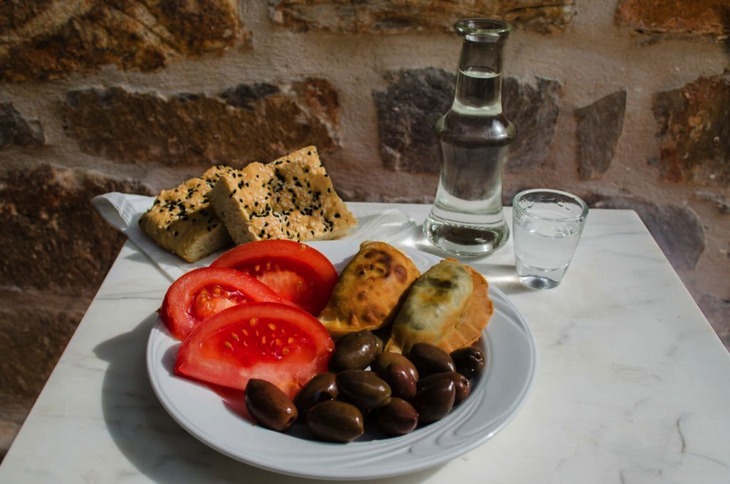In Crete, raki (also known locally as tsikoudia) is a traditional, strong distilled spirit made from the residue of grapes (skins, seeds, and stems) left over after wine production. It typically contains 40–45% alcohol and is clear, colorless, and highly aromatic.

Key Facts about Raki (Tsikoudia) in Crete:
- Origin: Raki has deep roots in Cretan tradition, dating back to Venetian times or even earlier. It is considered a symbol of Cretan hospitality.
- Production: After grapes are pressed for wine, the remaining pomace (called "strafylla") is fermented and then distilled in copper stills (called kazania). This usually happens in late October to early November and is often celebrated with communal feasts.
- How it’s served:
- Always served in small shot glasses, often cold, and sometimes with a meze (snack) such as olives, cheese, or nuts.
- Offered as a gesture of welcome or to close a meal — a sign of friendship and trust.
- Different from ouzo: Unlike ouzo (which is flavored with anise), raki has no added flavorings, making it purer in taste.
- Cultural importance: Drinking raki is more than just consuming alcohol; it’s a ritual of connection — shared at social gatherings, celebrations, and even business meetings.
In short, raki is the spirit of Crete — both literally and culturally. It embodies the island's warmth, hospitality, and communal spirit.
#travelcretetours #WildCrete #SummerInCrete #WeGuideTravellers #offthebeatenpath
